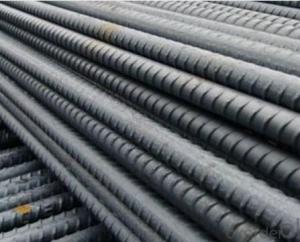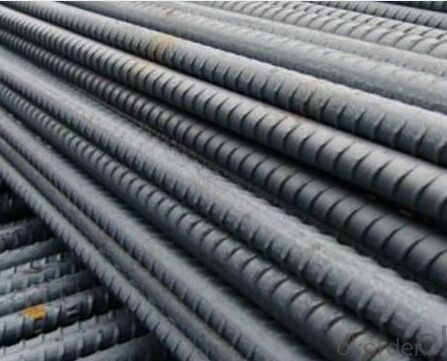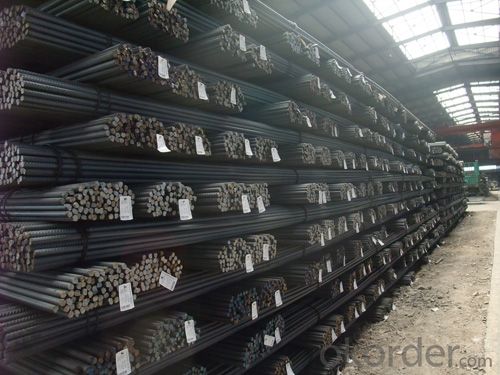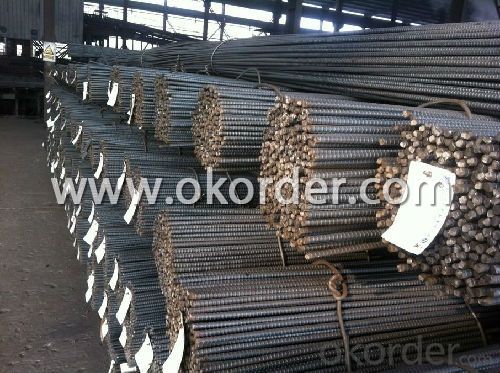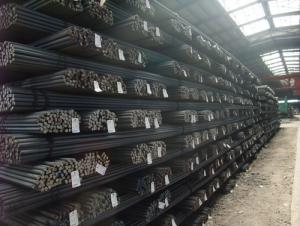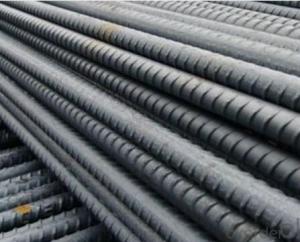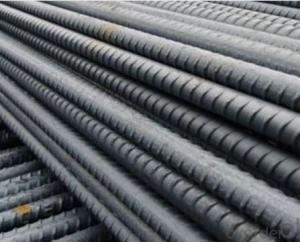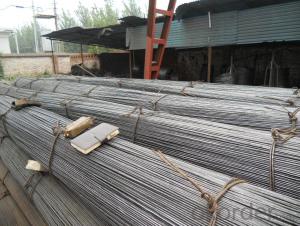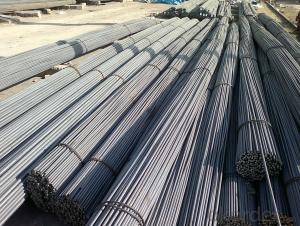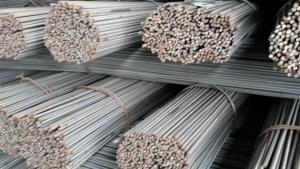GB STANDARD HIGH QUALITY HOT ROLLED STEEL REINFORCEMENT BAR
- Loading Port:
- Tianjin
- Payment Terms:
- TT OR LC
- Min Order Qty:
- 50 m.t.
- Supply Capability:
- 100000 m.t./month
OKorder Service Pledge
OKorder Financial Service
You Might Also Like
Product Description
Appearance: Black
Technique: Slitting hot rolled steel coil
Grade: Q235, Q195,A36 SS400 S235jr.St37-2
Standard: AISI,GB,DIN,ASTM,EN,JIS
Length: 6m, 9m, 12m or as your requirement.
Width: 10mm-1010mm
Thickness: 1.5mm-20mm
Place of origin: Tianjin China (Mainland)
Packaging Details: In bundles for exporting and sea worthy
Delivery Detail: Within 15-35 days after receiving L/C or deposite T/T
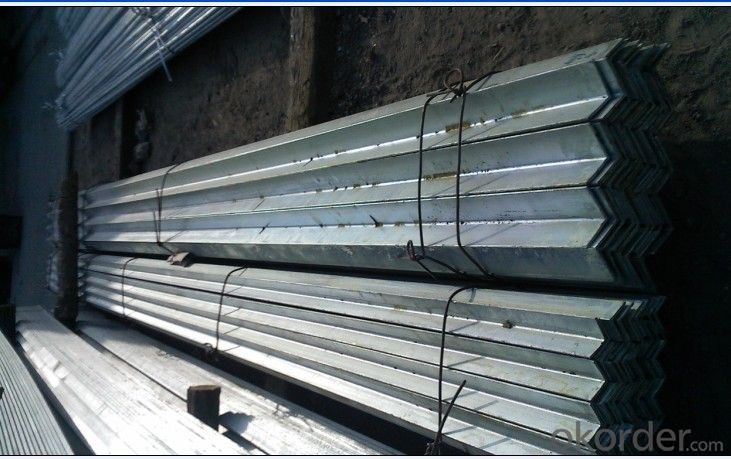
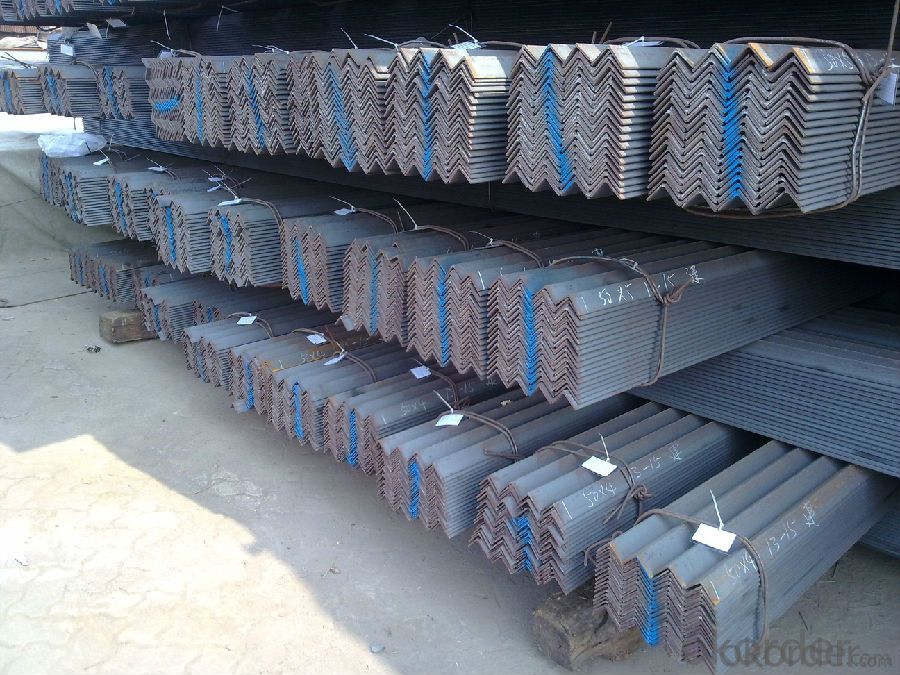
General specification as below:
Flat Bar Specification | |||
Width (mm) | Thickness (mm) | Length (m) | Theoretical Weight (kg/m) |
20 | 2.0 | 6/9/12 | 0.31 |
20 | 2.5 | 6/9/12 | 0.39 |
20 | 2.75 | 6/9/12 | 0.43 |
25 | 2.5 | 6/9/12 | 0.49 |
25 | 3.75 | 6/9/12 | 0.74 |
30 | 2.5 | 6/9/12 | 0.59 |
30 | 3.5 | 6/9/12 | 0.82 |
30 | 9.75 | 6/9/12 | 2.30 |
40 | 3.5 | 6/9/12 | 1.10 |
40 | 4.75 | 6/9/12 | 1.50 |
40 | 11.75 | 6/9/12 | 3.69 |
50 | 2.75 | 6/9/12 | 1.08 |
50 | 4.5 | 6/9/12 | 1.77 |
50 | 9.75 | 6/9/12 | 3.83 |
60 | 5.5 | 6/9/12 | 2.60 |
60 | 7.5 | 6/9/12 | 3.53 |
60 | 11.5 | 6/9/12 | 5.42 |
80 | 5.5 | 6/9/12 | 3.45 |
80 | 7.5 | 6/9/12 | 4.71 |
80 | 11.75 | 6/9/12 | 7.38 |
100 | 3.25 | 6/9/12 | 2.55 |
100 | 4.75 | 6/9/12 | 3.73 |
100 | 7.5 | 6/9/12 | 5.89 |
120 | 9.75 | 6/9/12 | 9.18 |
120 | 11.75 | 6/9/12 | 11.07 |
150 | 9.75 | 6/9/12 | 11.48 |
150 | 11.5 | 6/9/12 | 13.54 |
150 | 13.5 | 6/9/12 | 15.90 |
160 | 11.75 | 6/9/12 | 14.76 |
200 | 9.5 | 6/9/12 | 14.92 |
250 | 5.75 | 6/9/12 | 11.28 |
340 | 7.75 | 6/9/12 | 20.68 |
Products Advantages
1. high quality competitive price and Accurate in size
2. high dimensional accuracy
3. Guaranteed raw material
4.high utilization rate of material
5.convenient in construction, saving much time and labor
6. high mechanical strength
Application: Widely used for construction, Ship building, Machinery manufacturing ,steel structure,agriculture and steel grating.
- Q: What is the role of steel rebars in roof slab construction?
- Steel rebars are commonly used in roof slab construction to provide reinforcement and strength to the concrete. They help to distribute the load evenly across the slab, making it more resistant to bending and cracking. The rebars also help to prevent the concrete from expanding or contracting due to temperature changes, ensuring the stability and durability of the roof slab.
- Q: Why is the earthing device forbidden to use thread steel instead of round steel as lap steel bar?
- Steel is known as hot rolled ribbed bar. Ordinary hot rolled steel bars are made up of HRB and the minimum yield point of the brand.
- Q: What is the typical weight per meter of a steel rebar?
- The weight per meter of a steel rebar may vary depending on its size and grade. Typically, a 10 mm mild steel rebar weighs approximately 0.616 kg/m. However, for larger sizes like a 20 mm rebar, the weight per meter can be around 2.47 kg/m. It should be noted that these values are approximate and may differ slightly based on manufacturing standards and regional regulations.
- Q: Can steel rebars be used in marine structures?
- Marine structures can indeed utilize steel rebars. Due to its robustness, endurance, and resistance to corrosion, steel is a prevalent material in marine construction. Nonetheless, it is crucial to employ steel rebars that are specifically engineered for marine purposes. These rebars are typically manufactured from stainless steel or galvanized steel, both of which possess superior corrosion resistance properties compared to traditional carbon steel rebars. Furthermore, an additional safeguard such as epoxy coating or cathodic protection systems can be applied to further bolster the rebars' ability to withstand corrosion in harsh marine environments. Consistent maintenance and vigilant monitoring are also vital to ensure the long-term effectiveness and integrity of steel rebars in marine structures.
- Q: Can steel rebars be used in retaining walls?
- Yes, steel rebars can be used in retaining walls. Steel rebars, also known as reinforcing bars, are commonly used in retaining walls to provide additional strength and reinforcement. The rebars are typically embedded within the concrete or masonry structure of the retaining wall, helping to increase its structural integrity and resistance to forces such as soil pressure. The use of steel rebars in retaining walls helps to prevent cracking, shifting, or collapsing of the wall, making it a reliable and durable solution for retaining soil and preventing erosion.
- Q: Are there any environmental concerns related to the production of steel rebars?
- Yes, there are several environmental concerns related to the production of steel rebars. One major concern is the high carbon emissions associated with the steel production process, which contributes to climate change. Additionally, the extraction and processing of raw materials for steel rebars, such as iron ore and coal, can lead to deforestation, habitat destruction, and air and water pollution. Proper waste management and recycling of steel scrap are also important considerations to minimize the environmental impact of steel rebar production.
- Q: What is the process of installing steel rebars in slabs and beams?
- The process of installing steel rebars in slabs and beams involves several steps. Firstly, the design and layout of the rebars are determined based on the structural requirements. The rebars are then cut, bent, and shaped according to the specifications. Next, the concrete forms for the slabs and beams are prepared, ensuring they are clean and properly aligned. Once the forms are ready, the rebars are placed inside the forms in the desired positions, maintaining the required spacing and clearances as per the design. Proper support is provided to hold the rebars in place and prevent displacement during the concrete pouring process. After the rebars are correctly positioned, concrete is poured into the forms, covering the rebars entirely. During pouring, care is taken to ensure that the concrete adequately surrounds and encases the rebars, providing the necessary structural integrity. Finally, the concrete is allowed to cure and harden, creating a strong bond with the rebars. Once the concrete has fully cured, the forms are removed, and any excess concrete or debris is cleaned off the surface. Overall, the process of installing steel rebars in slabs and beams involves careful planning, precise positioning, and proper concrete placement to create a reinforced structure that can withstand the intended loads and stresses.
- Q: Can steel rebars be used in structures with high resistance to moisture?
- Yes, steel rebars can be used in structures with high resistance to moisture. Steel rebars are commonly used in reinforced concrete structures, including those that are exposed to moisture such as bridges, marine structures, and underground structures. However, it is important to use properly coated or corrosion-resistant steel rebars, and ensure proper concrete cover and waterproofing measures are implemented to protect against the potential corrosion caused by moisture.
- Q: Can steel rebars be used in the construction of office buildings?
- Yes, steel rebars can be used in the construction of office buildings. Steel rebars are commonly used as reinforcement in concrete structures, including office buildings. They provide strength and stability to the concrete, making it more resistant to cracking and bending. The use of steel rebars helps to ensure the structural integrity of the building, especially in areas of high stress or load-bearing requirements. Additionally, steel rebars are durable and long-lasting, making them a reliable choice for construction projects.
- Q: How are steel rebars installed in concrete?
- Steel rebars are installed in concrete by first determining the required size and spacing of the rebars based on the structural design. Then, the rebars are cut and placed in the formwork or mold before pouring the concrete. The rebars are positioned and tied together using wire or rebar tie clips to ensure they are securely embedded within the concrete. This reinforcement enhances the strength and durability of the concrete structure.
Send your message to us
GB STANDARD HIGH QUALITY HOT ROLLED STEEL REINFORCEMENT BAR
- Loading Port:
- Tianjin
- Payment Terms:
- TT OR LC
- Min Order Qty:
- 50 m.t.
- Supply Capability:
- 100000 m.t./month
OKorder Service Pledge
OKorder Financial Service
Similar products
Hot products
Hot Searches
Related keywords
